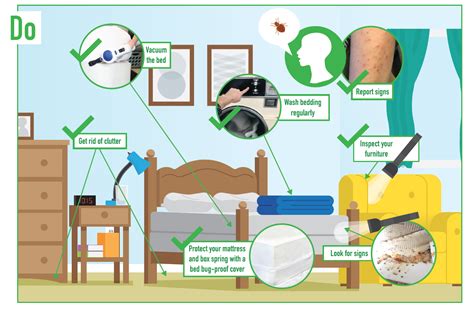How to Prevent Bed Bugs: A Comprehensive Guide
Bed bugs. Just the name is enough to send shivers down your spine. These tiny, nocturnal insects are notorious for their itchy bites and their ability to infest homes, hotels, and even office spaces. But fear not! While completely eliminating the risk of bed bugs is nearly impossible, proactive prevention significantly reduces your chances of encountering these unwelcome guests. This guide will equip you with the knowledge and strategies to protect your home and yourself from a bed bug infestation.
Understanding the Enemy: Bed Bug Behavior
Before we delve into prevention, it's crucial to understand how bed bugs operate. This knowledge is your first line of defense.
- Their Diet: Bed bugs feed exclusively on blood, primarily human.
- Their Habitat: They prefer dark, secluded areas, often hiding in mattresses, box springs, bed frames, and cracks in walls.
- Their Movement: They can travel surprisingly far, hitching rides on luggage, clothing, and furniture.
Proactive Steps to Prevent Bed Bugs
Prevention is always better than cure, and with bed bugs, this couldn't be truer. Here's a breakdown of effective preventive measures:
1. Vigilance When Traveling:
- Inspect Hotel Rooms: Before unpacking, thoroughly check the mattress seams, bed frame, and headboard for any signs of bed bugs (dark spots, shed skins, live bugs).
- Keep Luggage Off the Floor: Place your luggage in a designated area, ideally a luggage rack, to prevent contact with the floor.
- Inspect Your Luggage: Upon returning home, carefully inspect your luggage, including the seams and zippers.
- Wash Your Clothes: Wash all clothes immediately upon returning from a trip, using hot water and drying on high heat.
2. Home Maintenance and Cleaning:
- Regular Vacuuming: Frequently vacuum your floors, carpets, and especially around your bed. Dispose of the vacuum bag immediately afterward.
- Deep Cleaning: Regularly clean and declutter your bedroom. Remove unnecessary items that could provide hiding places for bed bugs.
- Mattress Encasements: Invest in high-quality mattress and box spring encasements. These act as a physical barrier, preventing bed bugs from accessing your bedding.
- Regular Inspection: Regularly inspect your mattress, box spring, bed frame, and surrounding areas for any signs of bed bugs.
3. Second-Hand Furniture Caution:
- Careful Inspection: If purchasing used furniture, inspect it meticulously before bringing it into your home. Look closely at all crevices and seams.
- Professional Treatment: Consider having used furniture professionally treated for bed bugs before placing it in your home.
4. Addressing Potential Entry Points:
- Seal Cracks and Gaps: Repair any cracks or gaps in walls, baseboards, and window frames to prevent bed bugs from entering your home.
Recognizing the Signs of Infestation
Even with preventative measures, it's essential to know the signs of a bed bug infestation. Early detection is key to effective treatment.
- Bites: Red, itchy bites, often appearing in clusters or lines.
- Fecal Spots: Small, dark spots on mattresses, bed linens, or walls.
- Live Bugs: Small, brown insects, about the size of an apple seed.
- Shedding Skins: Tiny, translucent shed skins of the bed bugs.
If you suspect a bed bug infestation, contact a pest control professional immediately. They have the expertise and tools to effectively eliminate the infestation.
Conclusion: Proactive Prevention is Key
While a complete elimination of bed bug risk is unrealistic, consistent vigilance and proactive prevention can significantly reduce your chances of an infestation. By implementing the strategies outlined above, you can create a hostile environment for these unwelcome guests, protecting your home and ensuring a peaceful night's sleep. Remember, prevention is the most cost-effective and stress-free approach to managing bed bugs.
